Exposure Limits for Air Contaminants – Quick Tips
References:
NIOSH Pocket Guide to Chemical Hazards, NIOSH, 2005
Definitions:
TLV (threshold limit value)-An estimate of the average safe airborne concentration of a substance in representative conditions under which it is believed that nearly all workers may be repeatedly exposed day after day without adverse effect. TLVs are published annually by the American Conference of Governmental Industrial Hygienists (ACGIH).
PEL (permissible exposure limit)-The OSHA limits of employee exposure to chemicals; found primarily in 29 CFR 1910.1000, table Z-1.
STEL (short term exposure limit)-The maximum concentration for a continuous 15-minute exposure period. Ceiling is the maximum allowable concentration to which an employee may be exposed.
IDLH (immediately dangerous to life and health)-The concentration of an airborne chemical which may cause irreversible health effects or death. NIOSH
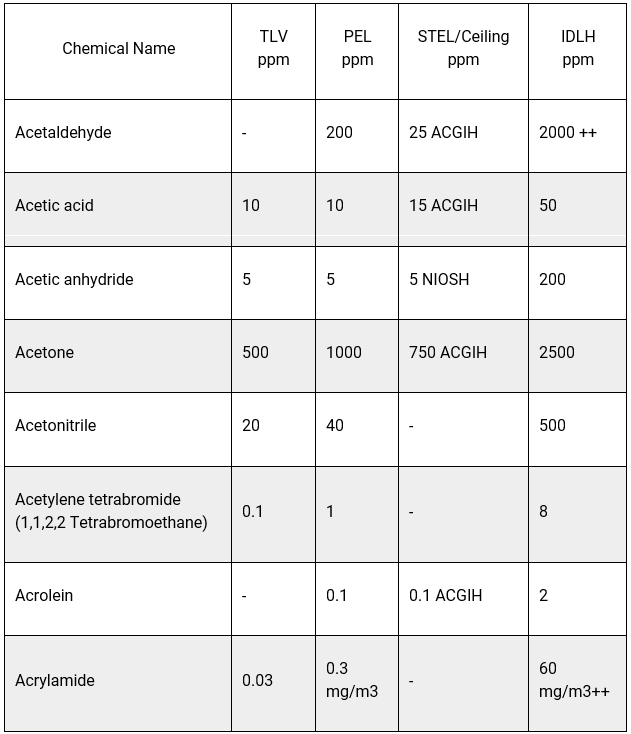
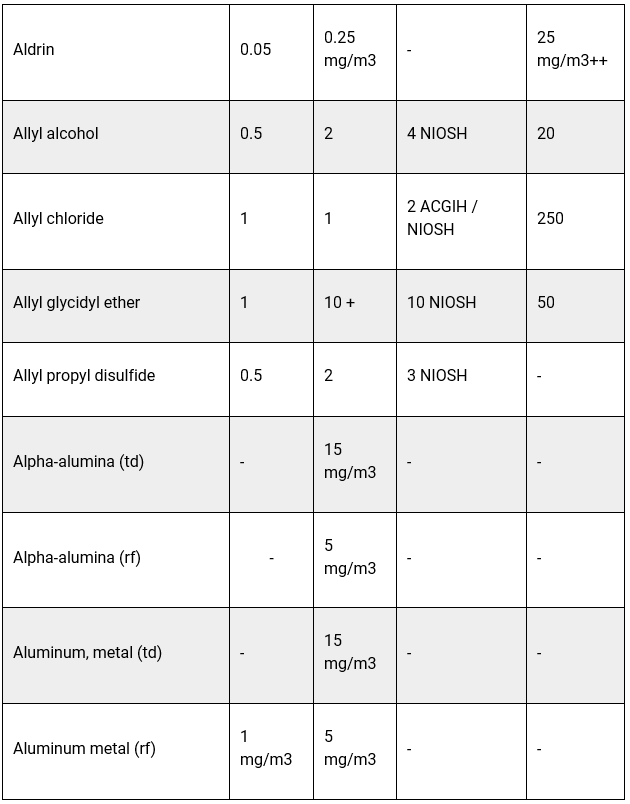
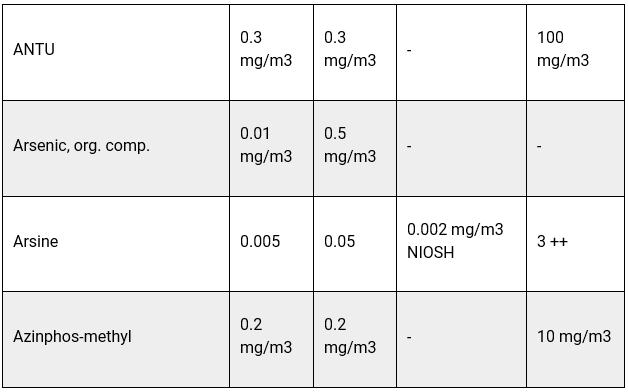
” + ” indicates a ceiling value
” ++ ” indicates that the chemical is believed, by NIOSH, to be a potential carcinogen.
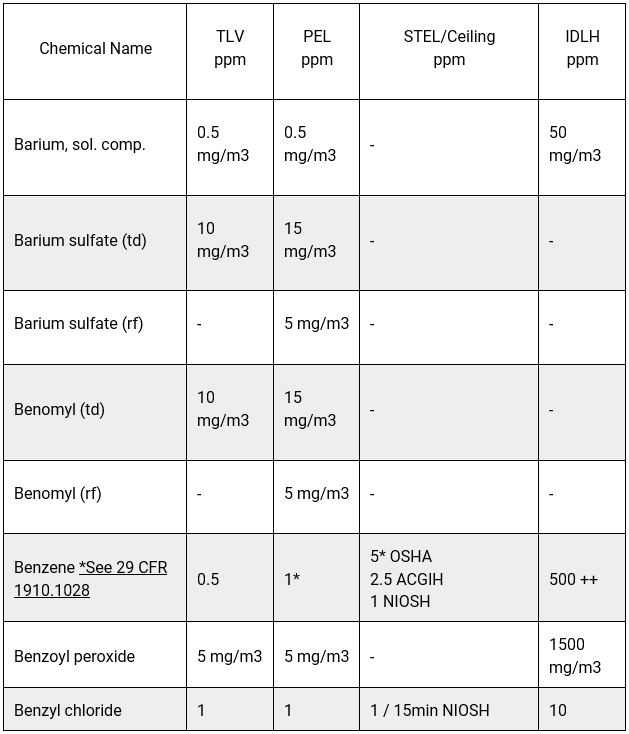
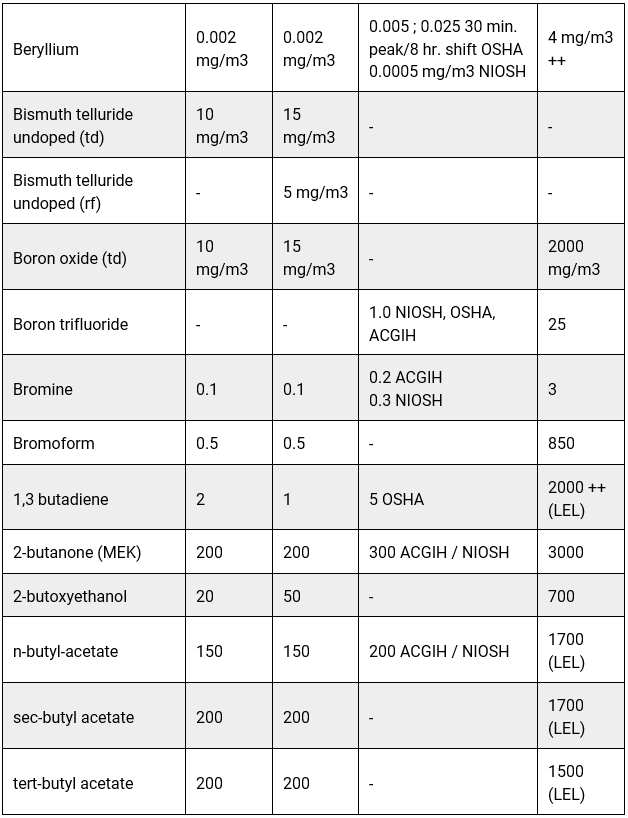
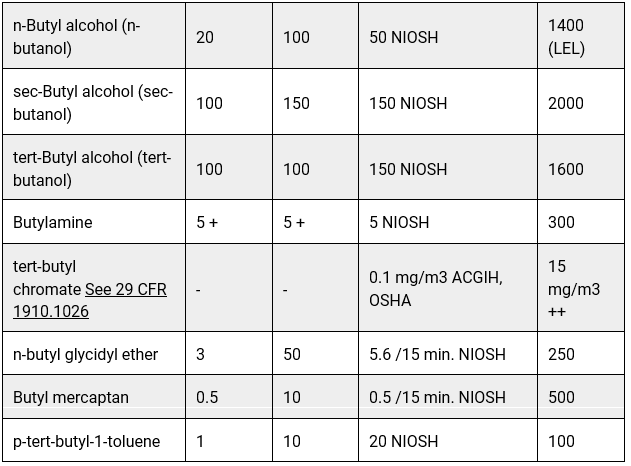
” + ” indicates a ceiling value
” ++ ” indicates that the chemical is believed, by NIOSH, to be a potential carcinogen.
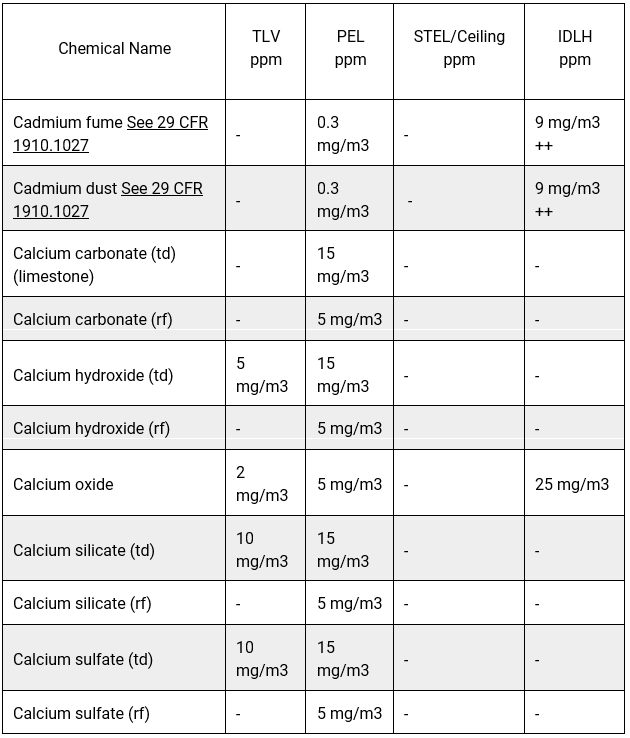
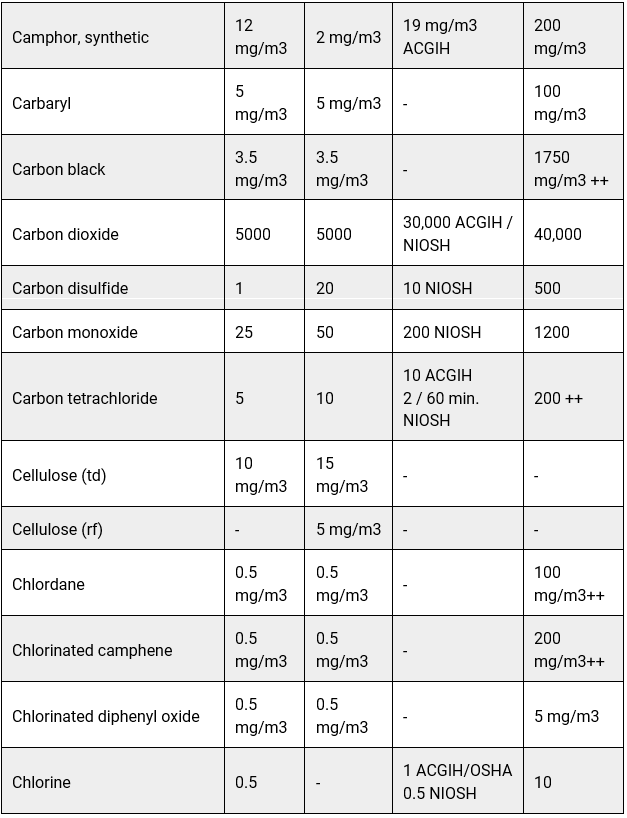
*For entire list download the pdf
Sources
Information on the most up to date NIOSH chemical hazards can be found online in the NIOSH Pocket Guide to Chemical Hazards, NIOSH, 2010
OSHA 29 CFR 1910.1000, Table Z-1
The information contained in this article is intended for general information purposes only and is based on information available as of the initial date of publication. No representation is made that the information or references are complete or remain current. This article is not a substitute for review of current applicable government regulations, industry standards, or other standards specific to your business and/or activities and should not be construed as legal advice or opinion. Readers with specific questions should refer to the applicable standards or consult with an attorney.
Source: Grainger Know How – https://www.grainger.com/know-how